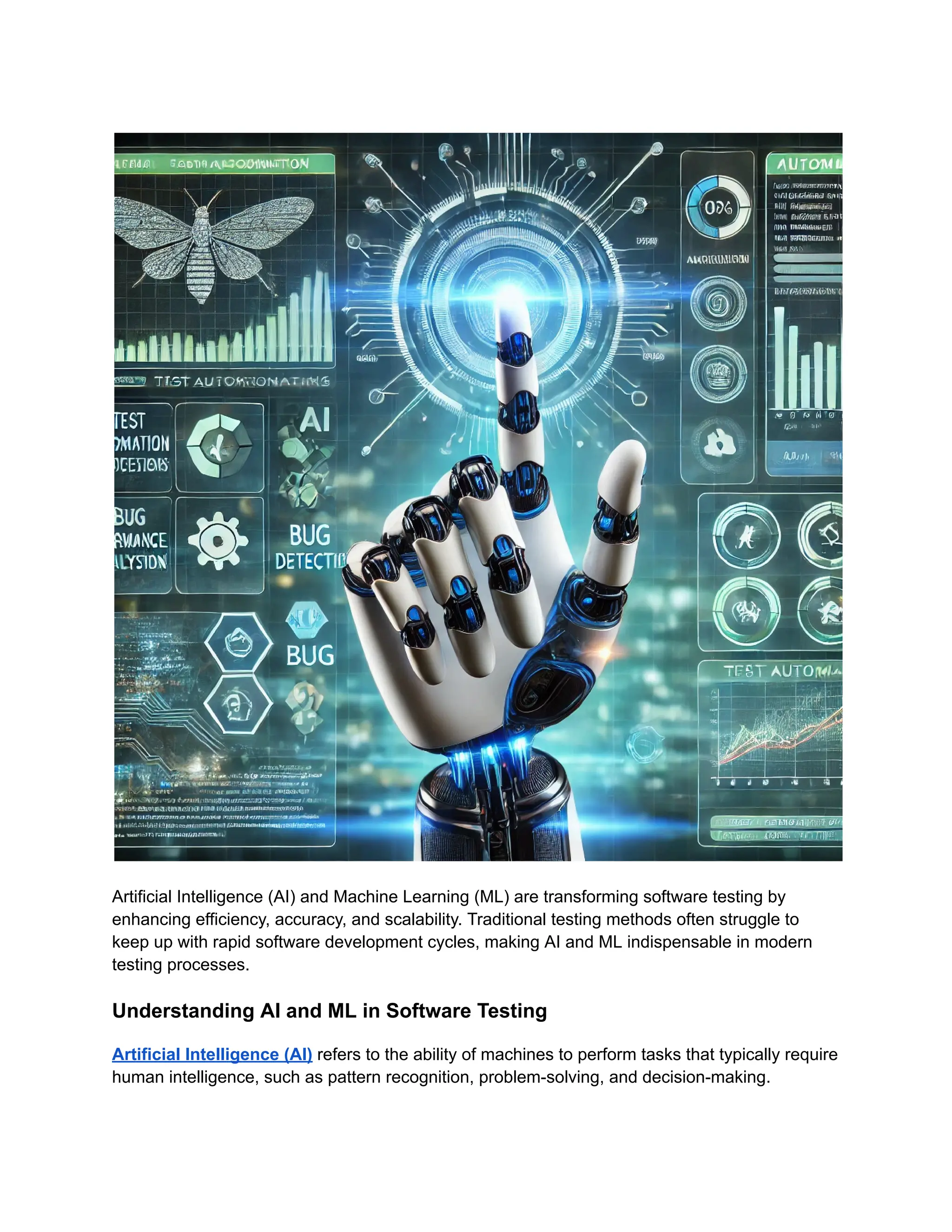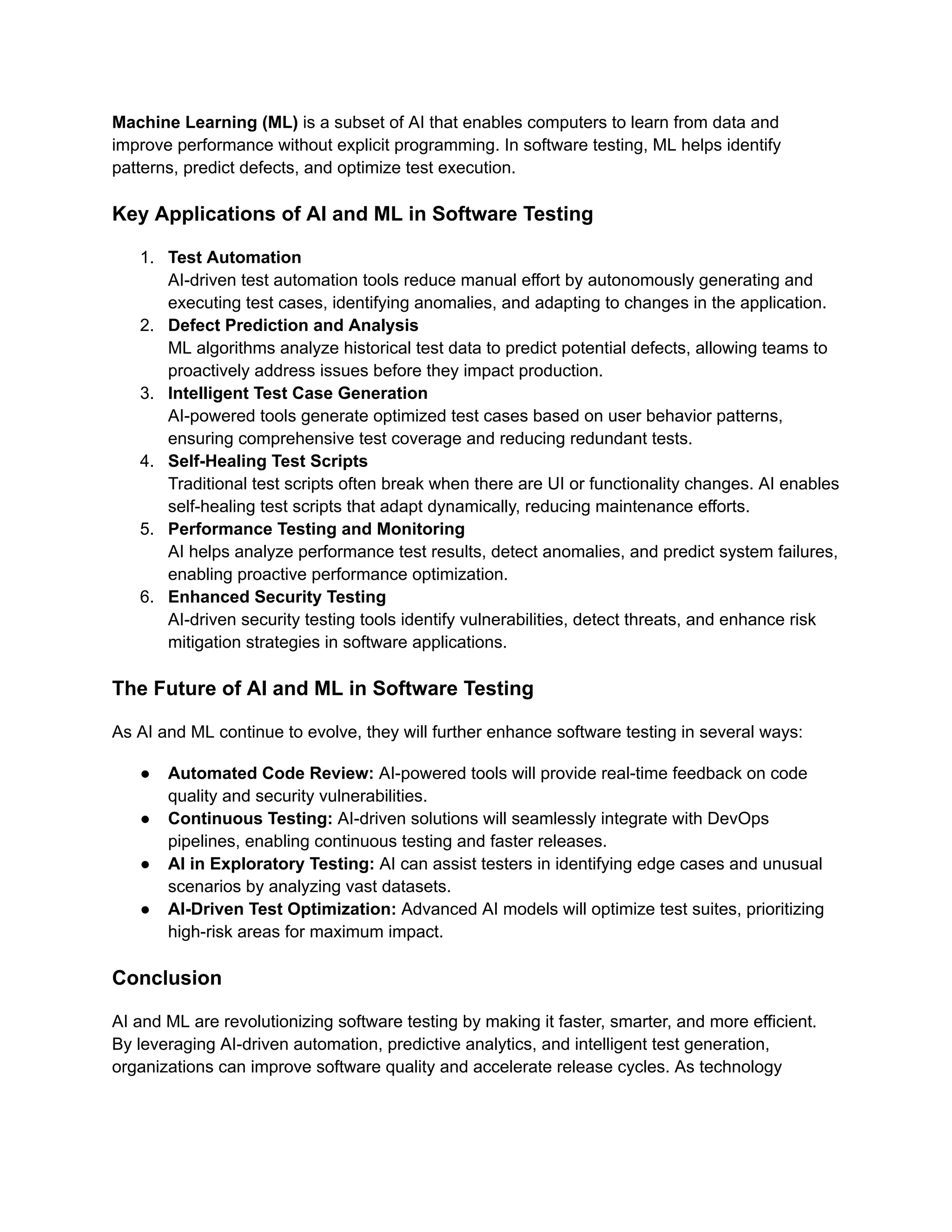Artificial Intelligence (AI) and Machine Learning (ML) are transforming software testing by enhancing efficiency, accuracy, and scalability. Traditional testing methods often struggle to keep up with rapid software development cycles, making AI and ML indispensable in modern testing processes.


